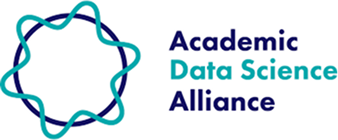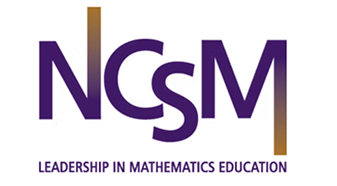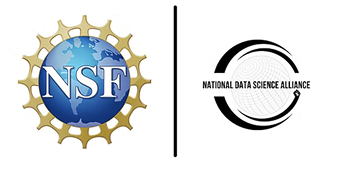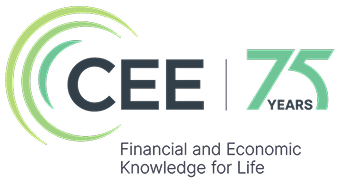Representational fluency
Identify how layout (ordering, scale, and axes) choices increase clarity or potentially mislead an audience.
K–2 Competencies
Compare and/or contrast different representations of the same data, including physical models (e.g., block towers), bar graphs, and picture graphs, and describe how they differ.
Use visual cues to interpret data. e.g., bar graph, taller bars mean higher frequency
Classroom resources
Data Science Starter Kit Module 5: Telling the Story - Visualization and Communication
Welcome to the culminating skill of data science—communicating your findings effectively so others can understand and act on them! This module focuses on how to create clear visualizations and compelling narratives that make data accessible and meaningful to different audiences.🔗
Visualization and Communication isn’t about creating fancy graphics or impressive presentations. It’s about developing the empathy and clarity to think, “How can I help others understand what this data means and why it matters to them?” The best data science in the world is useless if it can’t be understood and applied by the people who need it.
3–5 Competencies
Compare and/or contrast various visualizations of the same data by altering different features (e.g., reordering bars, changing colors), and explain how these changes affect what is highlighted or obscured in each representation. e.g., bar graph sorted by size highlights the most popular option, while sorting alphabetically can make comparison challenging
Classroom resources
Data Science Starter Kit Module 5: Telling the Story - Visualization and Communication
Welcome to the culminating skill of data science—communicating your findings effectively so others can understand and act on them! This module focuses on how to create clear visualizations and compelling narratives that make data accessible and meaningful to different audiences.🔗
Visualization and Communication isn’t about creating fancy graphics or impressive presentations. It’s about developing the empathy and clarity to think, “How can I help others understand what this data means and why it matters to them?” The best data science in the world is useless if it can’t be understood and applied by the people who need it.
6–8 Competencies
Compare and/or contrast various representations of data sets with multiple features and describe what is emphasized, de-emphasized, or obscured in each representation.
Describe how different ways of representing data can improve clarity or mislead.
Classroom resources
Middle School Drought Analysis
The purpose of this lesson is to develop students' data literacy skills through analyzing real drought data from their state or region. Students will explore climate patterns, create visualizations, draw evidence-based conclusions, and communicate findings effectively while learning to evaluate data sources, identify patterns, and understand the ethical implications of data analysis.
Data Science Starter Kit Module 5: Telling the Story - Visualization and Communication
Welcome to the culminating skill of data science—communicating your findings effectively so others can understand and act on them! This module focuses on how to create clear visualizations and compelling narratives that make data accessible and meaningful to different audiences.🔗
Visualization and Communication isn’t about creating fancy graphics or impressive presentations. It’s about developing the empathy and clarity to think, “How can I help others understand what this data means and why it matters to them?” The best data science in the world is useless if it can’t be understood and applied by the people who need it.
9–10 Competencies
Compare and/or contrast visualizations of the same numerical data at different scales and understand how the scale affects people's interpretation. e.g., accurately representing the relative magnitudes vs. exaggerating them
Critique misleading visualizations, such as those with truncated axes, cherry-picked data points, confusing colors, or manipulated scales. e.g., graph starting at 50 (not 0) can make a 5% drop look like a crash
Classroom resources
Who is the Data MVP of the NBA? by DataClassroom
The purpose of this lesson is to help students create sophisticated data visualizations to analyze NBA player performance while critically examining how data-driven arguments compare to human judgment in decision-making contexts. Students will use FiveThirtyEight's RAPTOR statistics to build evidence-based cases for MVP candidates, then evaluate the limitations of data storytelling when complex human factors influence real-world decisions
Data Science Starter Kit Module 5: Telling the Story - Visualization and Communication
Welcome to the culminating skill of data science—communicating your findings effectively so others can understand and act on them! This module focuses on how to create clear visualizations and compelling narratives that make data accessible and meaningful to different audiences.🔗
Visualization and Communication isn’t about creating fancy graphics or impressive presentations. It’s about developing the empathy and clarity to think, “How can I help others understand what this data means and why it matters to them?” The best data science in the world is useless if it can’t be understood and applied by the people who need it.
11–12 Competencies
Compare and/or contrast various representations of relative frequencies and proportions, identify elements of each representation that facilitate or hinder the identification of relative proportions, and explain the reasoning behind conventions. e.g., ordered or unordered stacked bar graph
Compare and/or contrast various ways to represent distributions and their measures of center (e.g., histograms, density plots, box plots) by plotting two distributions on the same graph and explaining how different representations facilitate or hinder the visibility of differences and associations.
Classroom resources
Too Old to Mango? by DataClassroom
The purpose of this lesson is to help students master professional-level data visualization and communication skills by analyzing agricultural research data on mango tree productivity across different ages. Students will create publication-quality visualizations, conduct statistical analysis, and communicate findings to diverse stakeholders in ways that can influence agricultural policy, economic decisions, and global food security strategies.
Data Science Starter Kit Module 5: Telling the Story - Visualization and Communication
Welcome to the culminating skill of data science—communicating your findings effectively so others can understand and act on them! This module focuses on how to create clear visualizations and compelling narratives that make data accessible and meaningful to different audiences.🔗
Visualization and Communication isn’t about creating fancy graphics or impressive presentations. It’s about developing the empathy and clarity to think, “How can I help others understand what this data means and why it matters to them?” The best data science in the world is useless if it can’t be understood and applied by the people who need it.
Advanced Competencies
Compare and/or contrast 2D and 3D bar graphs and pie charges and identify how unnecessary use of three dimensions obfuscates the relative frequencies and/or proportions of the data.
Compare and/or contrast varying bin sizes to demonstrate how different degrees of granularity in a histogram or other visualization type can lead to different interpretations.
Classroom resources
Support other teachers by sharing a resource
Do you have a lesson plan, video, or tip that could help others teaching this topic?
Share feedback on the Learning Progressions
Your feedback helps us improve these progressions for teachers around the world. Thank you!
Share feedback on the Learning Progressions
Your feedback helps us improve these progressions for teachers around the world. Thank you!
Share a classroom resource
Suggesting a resource helps students around the world learn essential data science skills.









.png)














